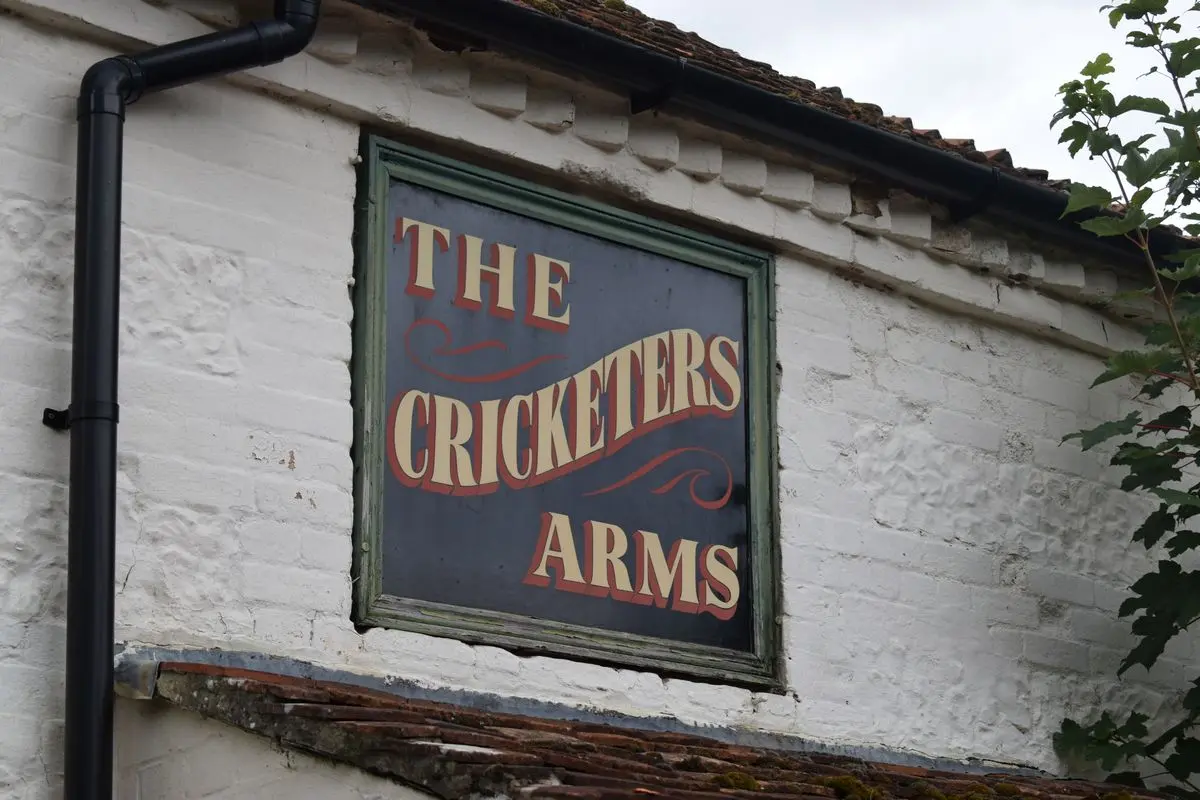It’s often said that the village pub is the heart of rural life. But what happens when that business ends and the building itself begins to decline?
The Cricketers’ Arms in Tangley, Hampshire, a Grade II listed former pub closed since 2019 and is now used as a private home. The building began life as a 17th-century timber-framed house, later converted to a public house by the early 19th century. It retains clear features of both lives. The building has lost part of its purpose but not its architectural or historic significance.
The challenge? Balancing the loss of communal value with the need for long-term heritage conservation.
A building with layers and character
Behind its distinctive 19th-century brick and flint façade, The Cricketers’ Arms conceals an earlier timber-framed core, likely dating to the 17th century. Inside, surviving plan forms, ceiling beams and fireplaces give clear insight into the building’s evolution, from early rural dwelling to coaching inn to 20th-century gastropub.
Importantly, the building has not been heavily modernised, and retains details like the bar, cellar access, and hand-pulled beer fittings that reflect its pub life. These elements carry communal and illustrative value, even if the business is no longer viable.
Uniqueness
The use of brick and flint panels on the principal elevation is characteristic of vernacular Hampshire architecture but particularly well executed here, combining vernacular form with modest civic presence. The way the building contributes to the village setting at a key junction also adds to its uniqueness serving not just as a building, but as a social and visual anchor within the conservation area. Layers of laughter and local lore are woven between the beams and brickwork. In Tangley, the Cricketers’ Arms was once the heartbeat and the unofficial village lost property office. Local legend recalls the summer of 1987, when the annual Tangley Cricket Match was in full swing and the post-match celebrations at the Arms reached legendary status.
As the story goes, one particularly enthusiastic batsman, after “celebrating” a little too heartily, woke up the next morning to discover he’d left not just his cricket bat, but also his whites, his bicycle, and—most mysteriously—his false moustache at the pub. The landlord, used to such shenanigans, simply hung the items behind the bar with a note: “If found, please return to owner (preferably before next year’s match).”
While not physically unique in structure alone, The Cricketers’ Arms holds communal value that adds to its heritage significance. It operated well into the 21st century, meaning many residents have lived experience of its use, which remains legible in the fabric. This makes it part of a living memory landscape, a rare quality in buildings that have formally ceased their public role.
When use ends, what remains?
The reality is that rural pubs are closing, and not all can be saved as commercial enterprises. In Tangley, the evidence of decline was clear—and continued vacancy risked damaging the building’s fabric.
The change of use back to a private home, while a loss of function, preserves the structure, protects surviving fabric, and creates scope for future enhancement and repair. Opportunities exist to reinstate original room divisions, expose hidden timber framing, and improve energy efficiency ensuring that the building can thrive in a new chapter.
If you’re working with redundant heritage assets, early engagement and proportionate significance assessments can guide sensitive change—without erasing the past.
#ListedBuildings #VillagePubs #AdaptiveReuse #HistoricEnvironment #CricketersArms #RuralHeritage #TimberFramedBuildings #PlanningConsent #ConservationInPractice


No Responses